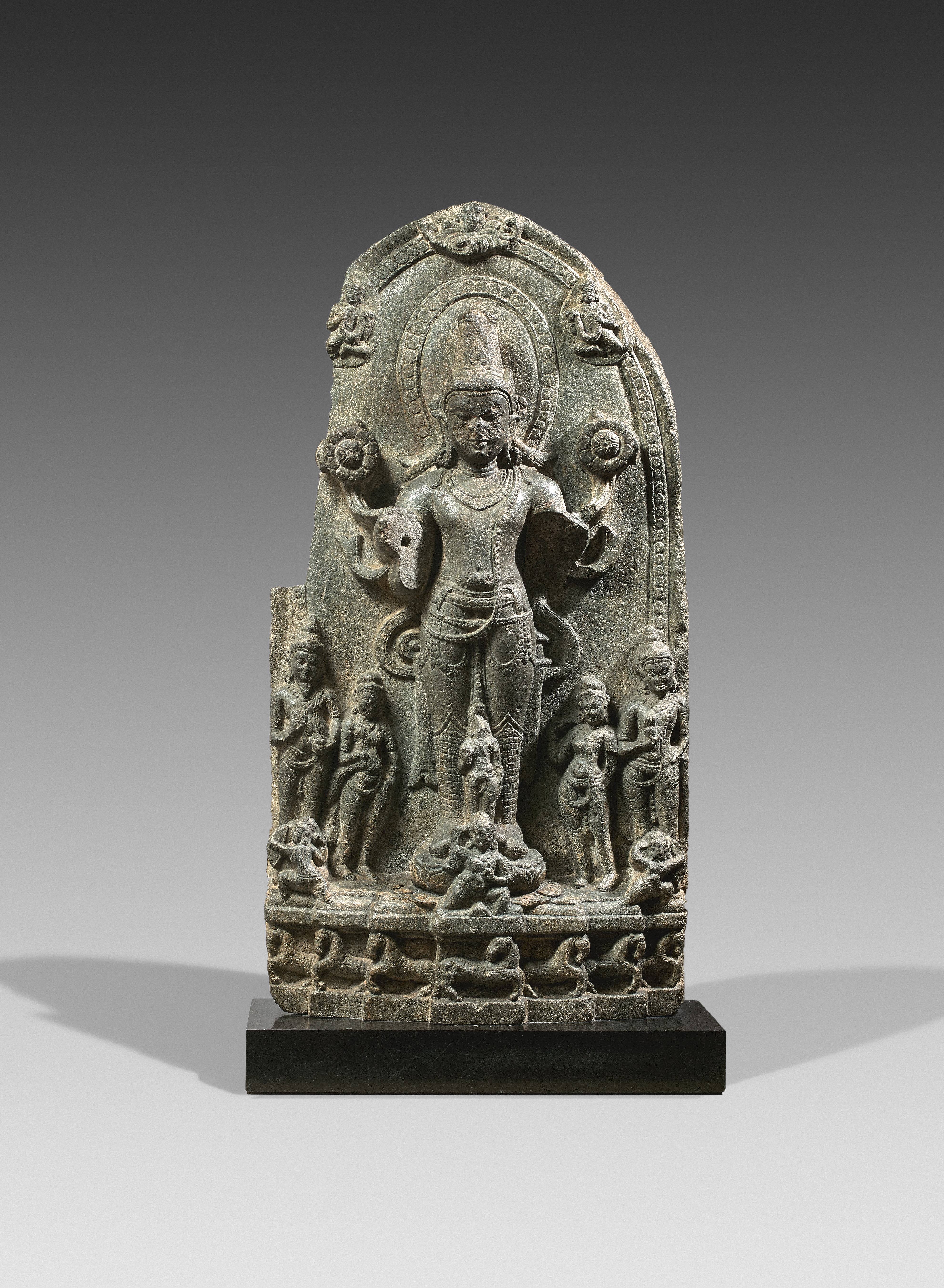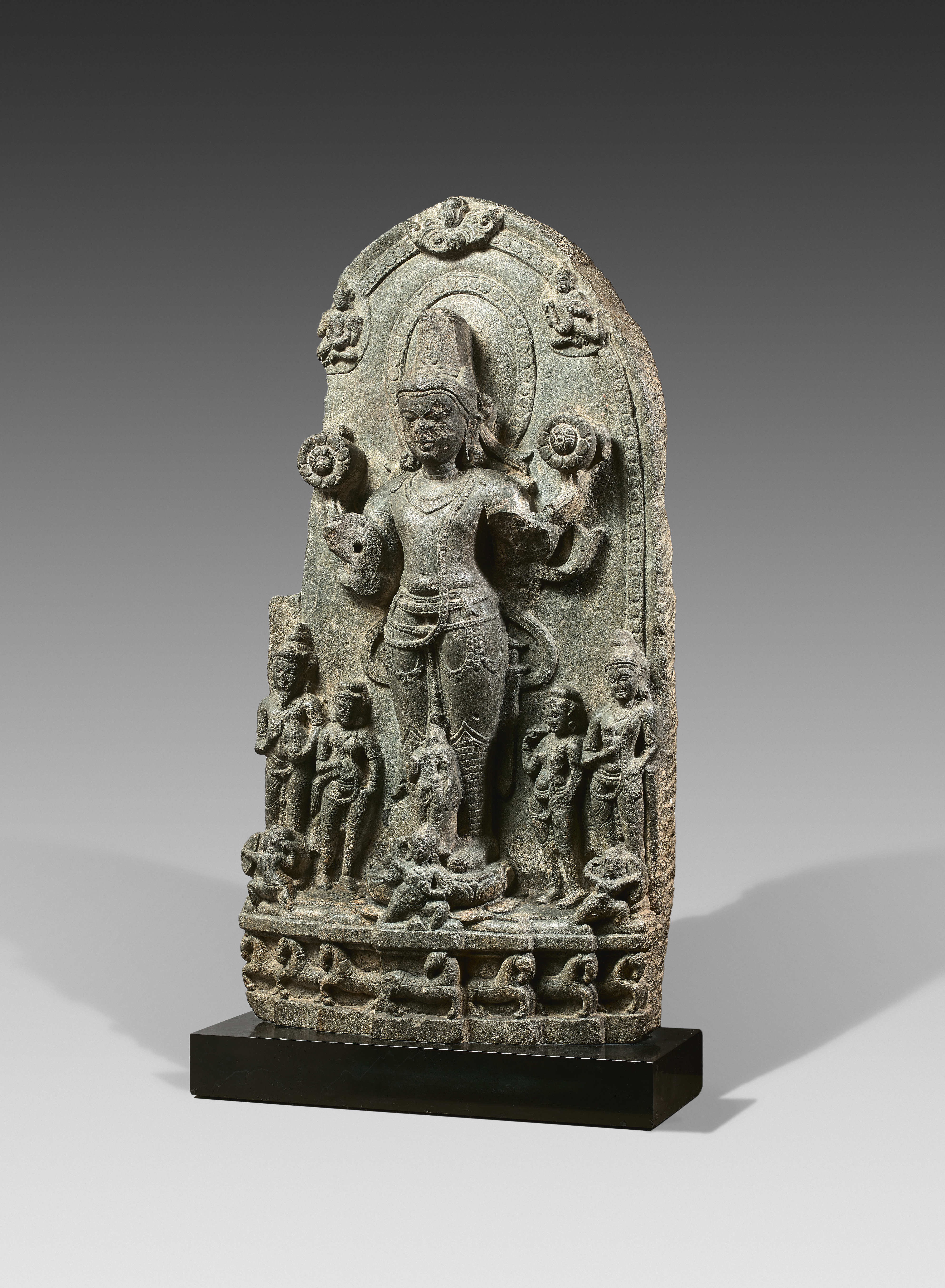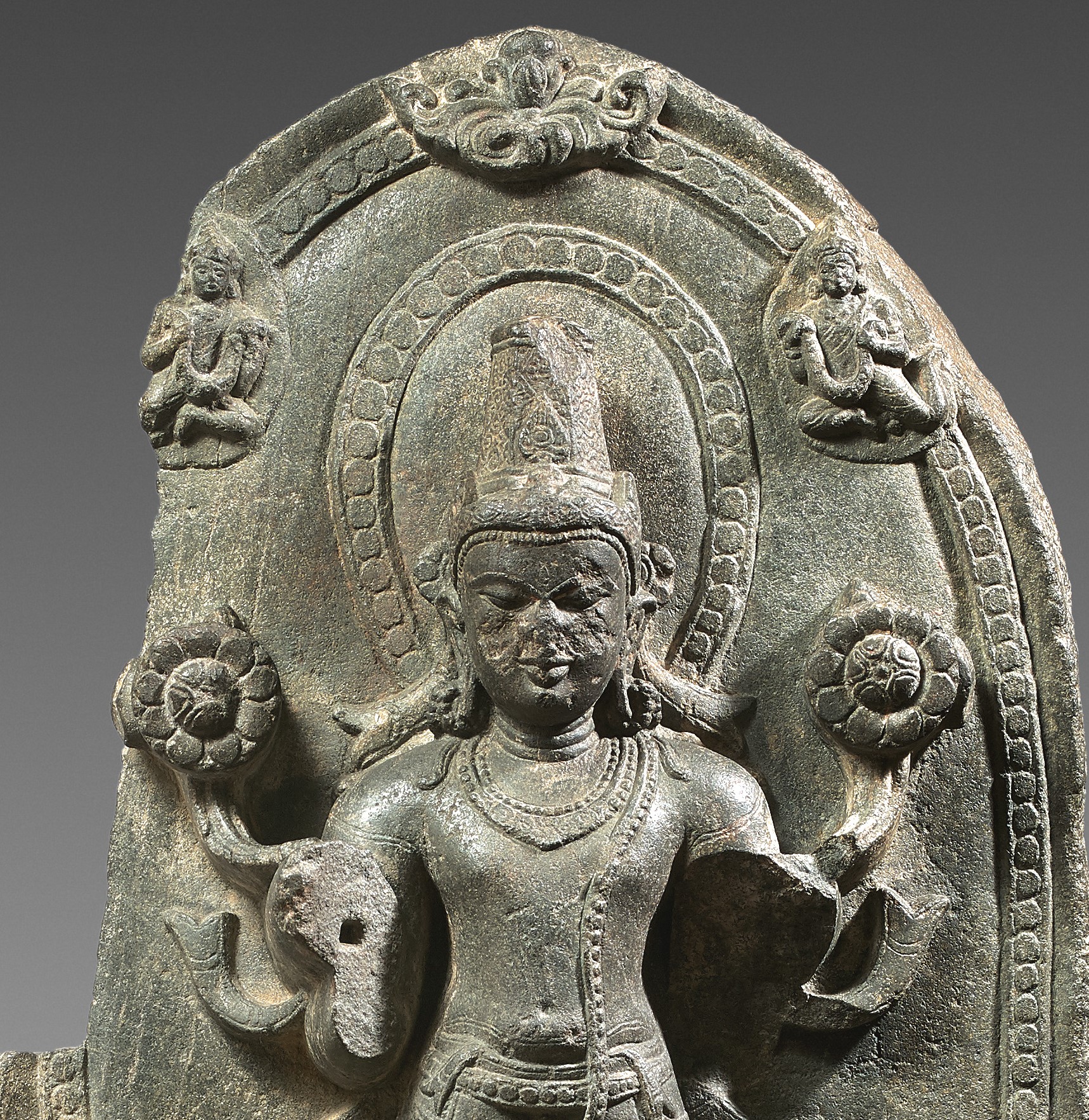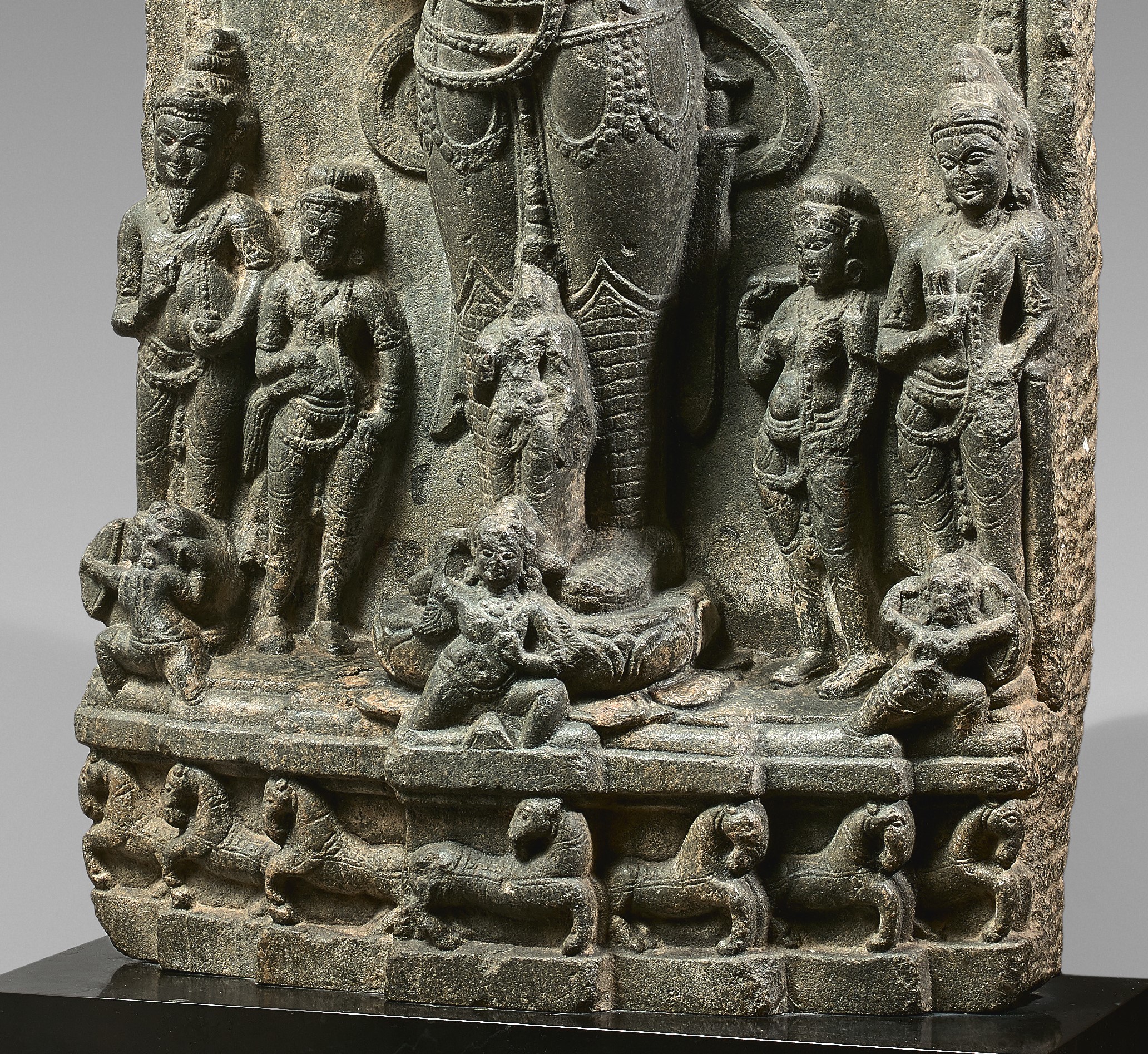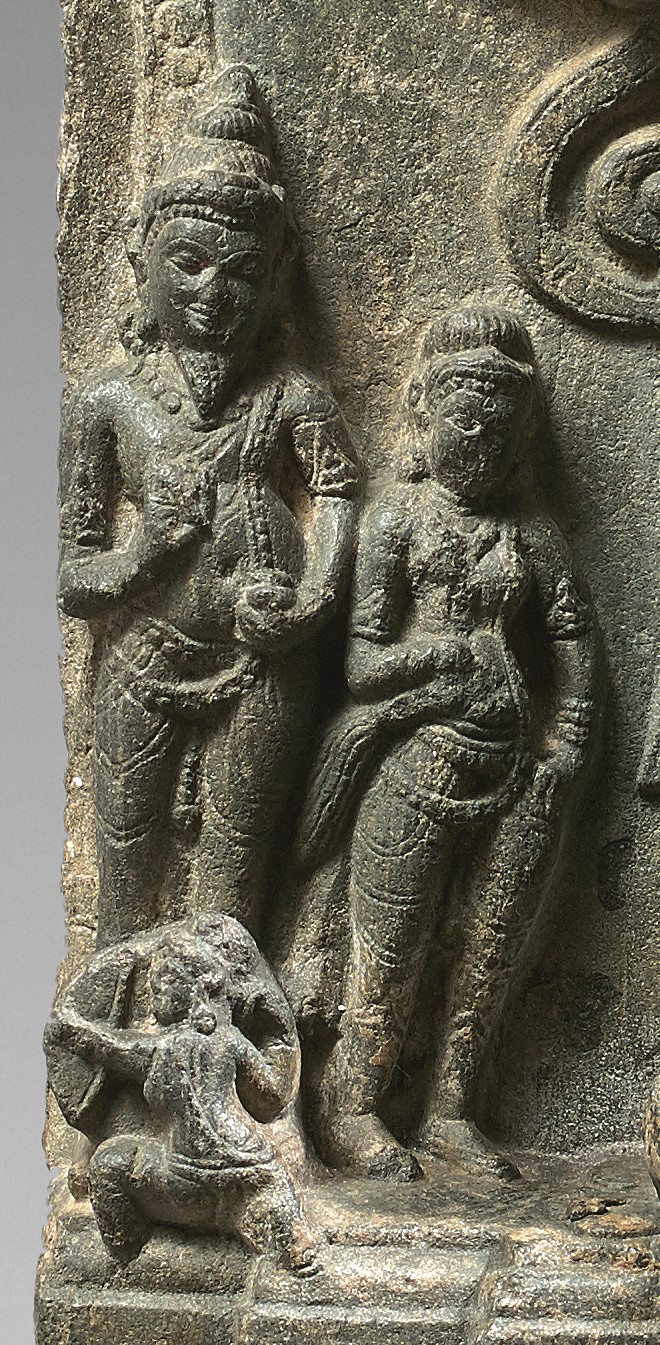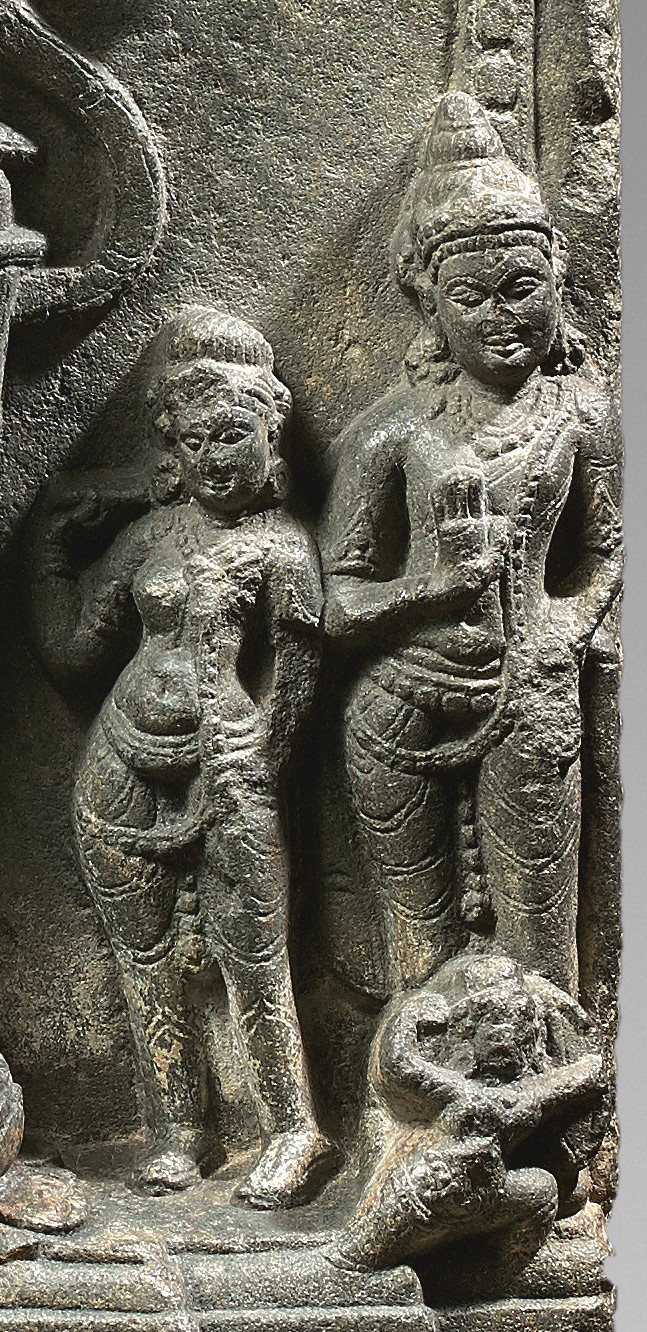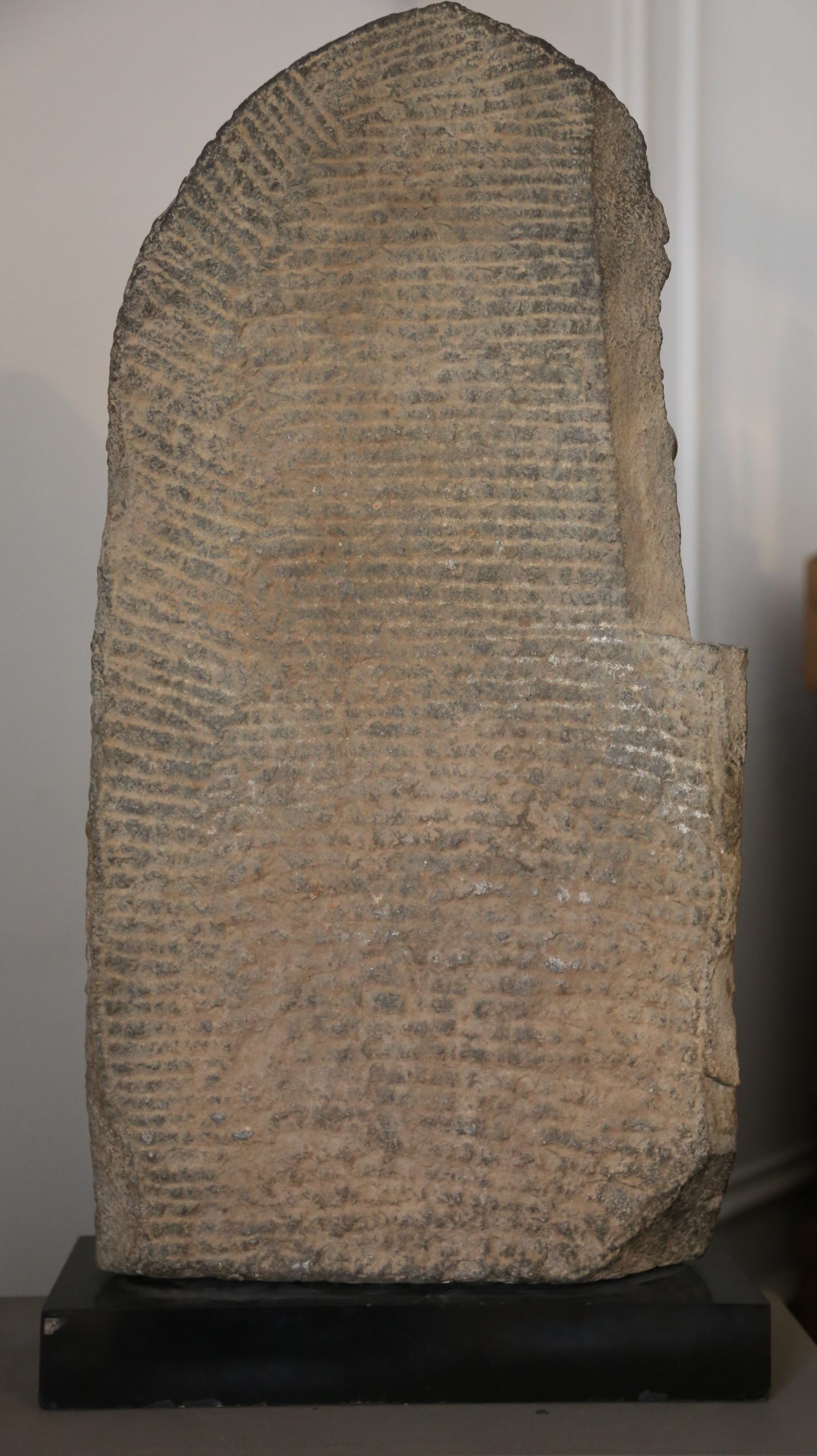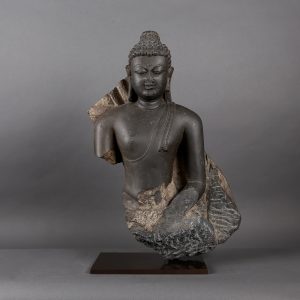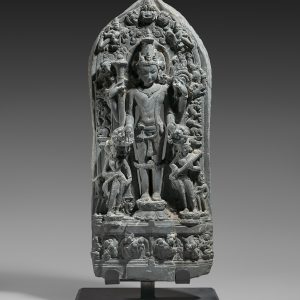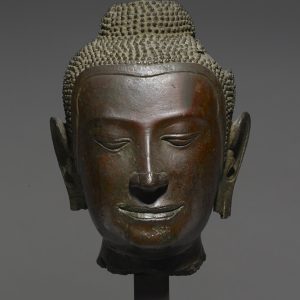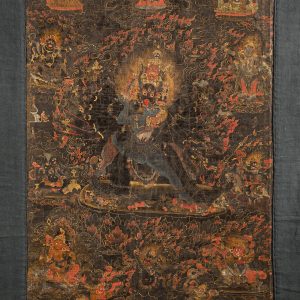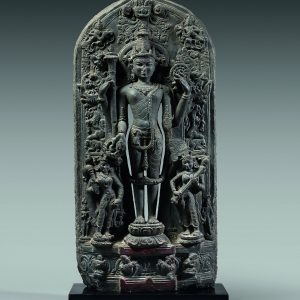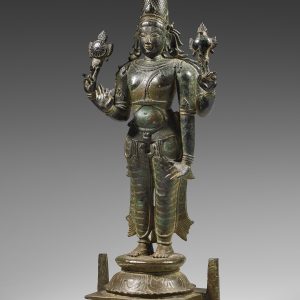Pāla stele of Sūrya
Phyllite stone
Northern India
Circa 10th century, Pāla period
H. 68 cm or 26 ¾ in
Description
Radiant Pāla stele made of sandstone, measuring 68 cm high (or 26 ¾ in), representing Sūrya, the Sun god and featuring all the characteristics of Pāla art of the 10th century in Northern India.
The characteristics of the god are numerous, and here rendered with care. Sūrya, with such a distinctive smile, particularly nice here, is standing full-front and in absolute symmetry. Depicted with a halo, wearing a royal tiara and heavy jewels, he is holding a lotus flower in each hand. His tall boots – a characteristic of the god’s iconography – are attributable to his Iranian origin. Sūrya stands majestically on his chariot driven by Aruṇa handling the seven dynamic horses, all depicted in the lower part.
On either side of the god are two assistants and their consorts. On the left, a slightly chubby Piṅgala is holding the stylus and inkwell he needs to note down the good and bad acts of men during the daytime. His wife is Darkness.
On the right one recognizes Daṇḍa traditionally armed with a sword, guardian of the residence of the Sun, along with his consort Light.
Sūrya’s two wives, Dawn and Dusk, of smaller size, are shooting arrows shaped like the rays of the sun.
The beauty of this stele lies in the balance between iconographic richness and stylistic sobriety. The undeniable clarity of the sculpted details, the elegance of the characters, the full and non-open background or the still quite rounded top are all elements that make it possible to advance an early date, circa 10th century. All this makes the piece even more remarkable.
Provenance: Private collection, France.

